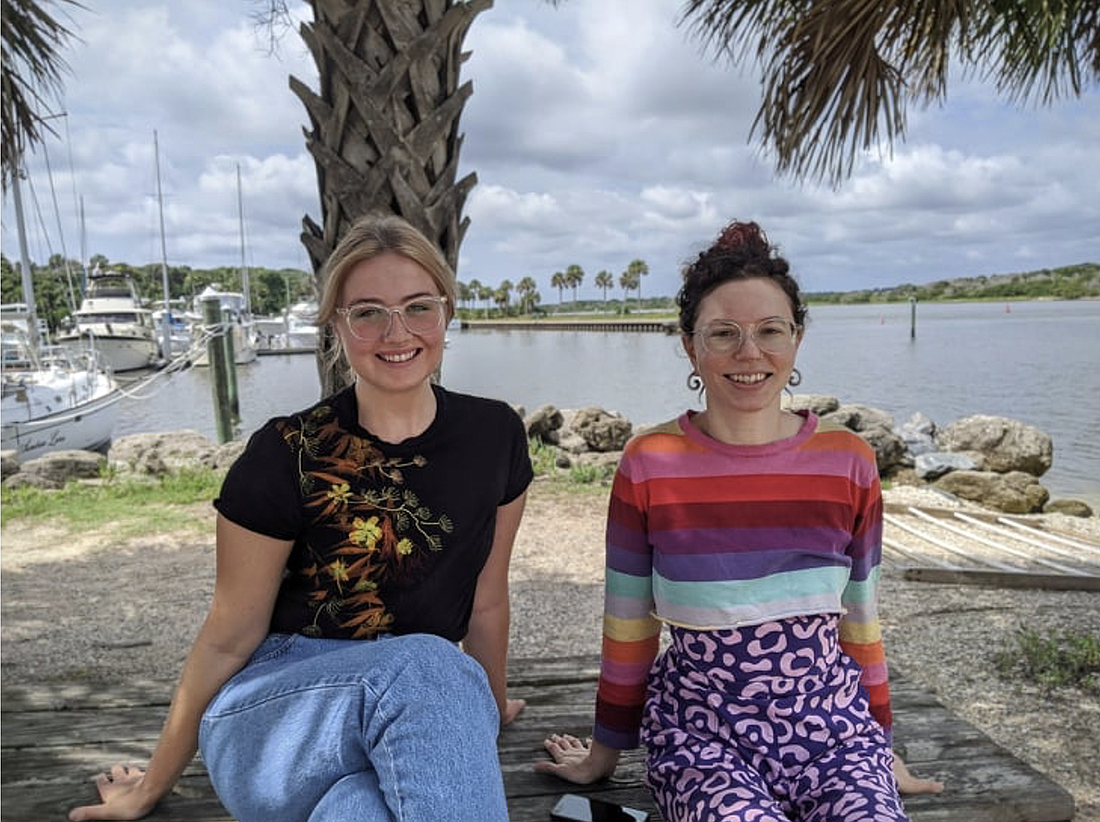- November 23, 2024
-
-
Loading

Loading

When it comes to scientific experiments, a lapse in attention can ruin days of hard work. But sometimes these mistakes can lead to incredible, albeit quirky, discoveries.
Late one night at the Whitney Laboratory for Marine Bioscience, University of Florida graduate student Dorothy Mitchell was trying to take pictures of ctenophores with a microscope. Mitchell has been studying ctenophores, or comb jellies, for years. This particular night, she wanted to zoom in to view the cellular structures of these “jelly-ball” animals up close and see what secrets she could learn about their remarkable ability to regenerate.
Comb jellies are notoriously tricky to image with a microscope. Their gelatinous tissues degrade to a jumbled mess under the lens, making it difficult to distinguish much of anything. Scientists have developed ways to prepare animal tissues for microscope imaging, but these techniques are mediocre at best with comb jellies. These procedures, called “fixations,” consist of washing specimens in different chemical baths to harden and preserve their tissues. It’s a tedious process where a lapse in attention can up-end hours or even days of hard work, resulting in destroyed samples and dejected spirits. That evening in the lab, Mitchell spent hours trying to take the perfect picture, but to no avail. Thinking her night’s work was a failure, she transferred her animals back into the bowl. Little did she realize that she had wiped too much Rain-X on her microscope slides and was about to make a discovery to add to the “gee-whiz” collection of science research.
Mitchell’s discovery is a perfect example of how science progresses bit by bit over time. Serendipity—along with experienced mentors and a curiosity that fosters resilience—can turn exasperated sighs from mistakes into surprised gasps of discovery.
Mitchell normally uses Rain-X on her glass microscope slides for the same reason you might wipe it on the windshield of your car—to make water droplets bead up on the glass, keeping it clear and unobscured. This Rain-X treatment allows her to place her specimens in a water bubble, preventing them from getting smooshed as she prepares the glass slide — until that night, she had never used Rain-X to fix jelly tissues.
“When I realized my mistake the next morning, I didn’t want to tell Mark,” Mitchell confessed, referring to her supervisor, Dr. Mark Martindale. “But I decided to take a closer look at these samples under the microscope, anyway.”
It turns out Rain-X preserves tissues of gelatinous marine animals beautifully.
“When I looked at my samples, I was amazed,” Mitchell said. “They were the clearest, most natural-looking pictures of preserved ctenophores I had ever seen. I knew I had to tell someone.” Mitchell showed her images to Dr. Allison Edgar, a post-doc in the lab whose research is funded by the NSF. Edgar was just as amazed, and together she and Mitchell decided to dig deeper.
“It’s a reminder to me of how important it is to have a variety of backgrounds in the lab,” Edgar said. “Scientists with different experiences can learn a lot from each other. I might have just tossed the ‘ruined’ samples in the trash because there was no obvious reason for keeping them, which means I probably wouldn’t have made this observation on my own.”
Mitchell added, “And if it wasn’t for Allison and her expertise and encouragement, I don’t know if we would have pursued this discovery further.”
After confirming that the animals were indeed preserved and could be imaged, Mitchell and Edgar broached the mishap and its resultant discovery with Martindale. He responded with a laugh and one of his favorite quotes: “Chance favors the prepared mind!”
Together, Martindale, Edgar, and Mitchell confirmed that their new Rain-X fixation technique could be applied to a wide range of sea creatures, demonstrating its versatility for broader biological research. Their protocol was published in Frontiers in Zoology and subsequently shared with other scientists studying gelatinous marine invertebrates.
“I knew what a fixed ctenophore should look like,” Mitchell said, “but I never thought I’d be able to see it so clearly, let alone help develop the technique to make it possible with something as ordinary as Rain-X!”
For folks who may wonder about potential conflicts of interest, Rain-X does not fund any of the research at UF’s Whitney Laboratory. Representatives of Rain-X declined to comment for this story.
For Mitchell and other comb jelly researchers, this Rain-X discovery is a major breakthrough. Scientists have been studying comb jellies for centuries to learn about their remarkable regenerative abilities and their impact on the environment. But it’s hard to glean much when you can’t see the details clearly—being able to identify cellular structures and tissue types is key to figure out how comb jellies regenerate and reproduce. This discovery at Whitney Laboratory improves current methods to help researchers learn more about the molecular and cellular components of regeneration. It also opens doors for scientists to study other types of gelatinous marine animals.
“There are so many organisms in the ocean with really interesting qualities,” Mitchell said. “Comb jellies can regenerate better than most common laboratory animals like mice or fruit flies, but we haven’t been able to figure out why because we lacked the basic tools to study them in more detail.” Now, scientists can use Whitney Laboratory’s protocol as a steppingstone to learn more about comb jellies and other marine animals with unique biomedical properties that, until now, have been difficult to study because of their fragile tissues.
Improved fixation methods may also help museum curators preserve specimens with gelatinous tissues. Today, “preserved” comb jellies look like clumps of Jell-O in a jar. Now, with Whitney Laboratory’s Rain-X protocol, it may be possible to preserve comb jellies indefinitely.